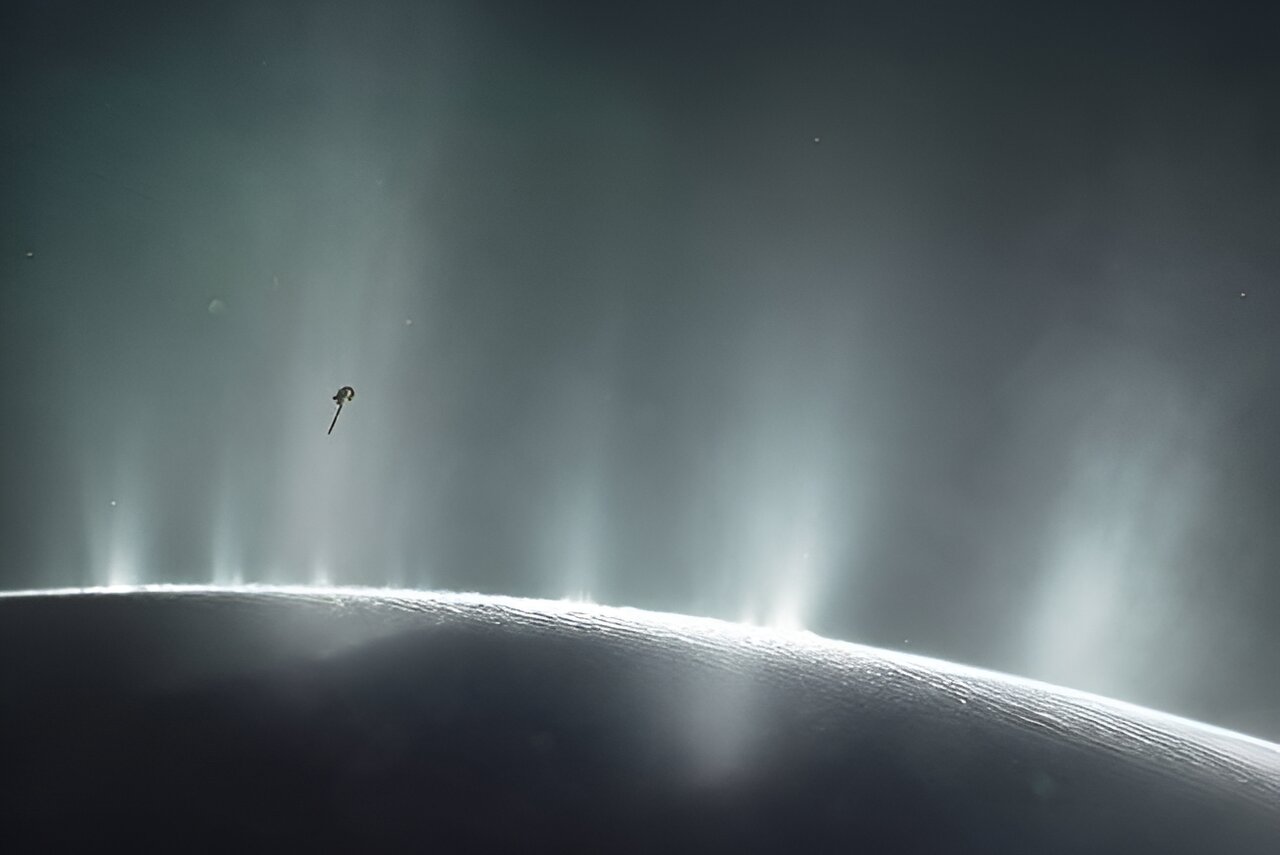Scientists used the data collected by the Cassini spacecraft to conduct the most detailed review of substances contained in the ocean of Saturn’s moon Enceladus to date. They came to the conclusion that even earthly life could exist there.

Chemicals in the Enceladus’ ocean
The ocean of Enceladus has everything that is necessary for the existence of life there. This conclusion was made by scientists in a recent scientific article, in which they once again analyzed the data of the Cassini spacecraft. Although this mission ended 6 years ago, scientists continue to look for interesting things in its data.
On Enceladus, an ocean of liquid water hides under the icy crust. Scientists know this for sure because it erupts into space through its icy shell. Previous studies have repeatedly found numerous organic substances in those emissions, but scientists have not reached a final conclusion about the presence of life there.
In the new work, the authors approach this issue more systematically. They focused on the study of ammonia and abiotic phosphorus contained in Enceladus’ ocean. On their own, they are not a sign of life, but their ratio may indicate the suitability of the conditions there for life as we know it on Earth.
Ratio of elements
The researchers used ecological and metabolic theory and modeling to understand whether terrestrial microorganisms could survive in Enceladus’ ocean. They turned to the concept of the Redfield ratio to do this.
It is named after a British scientist. He found that no matter which living animals represent the biomass in the ocean, the ratio of carbon, nitrogen and phosphorus in their composition remains constant: 106:16:1. It changes insignificantly to 166:22:1 only if there is a lot of plankton.
Moreover, Redfield suggested that there should be a balance between seawater and the bodies of organisms living in it. That is, in dissolved form, these substances should also be in water in the same proportions. Therefore, scientists believe that if somewhere on icy moons the Redfield ratio is the same as on Earth, this may indicate the possibility of life there.
Life can exist on Enceladus
The authors of the study went further and modeled the possible development of terrestrial archaea, which is called methanogenesis, in Enceladus conditions. On Earth, these microorganisms have existed for 3 billion years and, during this time, have mastered a wide variety of environments.
The most important conclusion that the simulation showed is that even cells similar to Earth’s could survive in Enceladus’ ocean, despite the slightly too high phosphorus levels for them. At the same time, it may turn out that life on Saturn’s moon has generated its own forms, more adapted to local conditions.
This study is part of a new effort to identify more than just individual chemical biosignatures, some of which may be false positives. Methane, for example, can be a biosignature, but it can also be produced abiotically. There are others, such as the recently discovered phosphine on Venus.
The next step is to understand ecosystems in general. There are an incredible number of factors to consider: cell size, nutrient availability, radiation, salinity, temperature. But to understand the general chemical environment on Enceladus, Europa, or any other place, we need more detailed data.
According to phys.org
Follow us on Twitter to get the most interesting space news in time
https://twitter.com/ust_magazine
